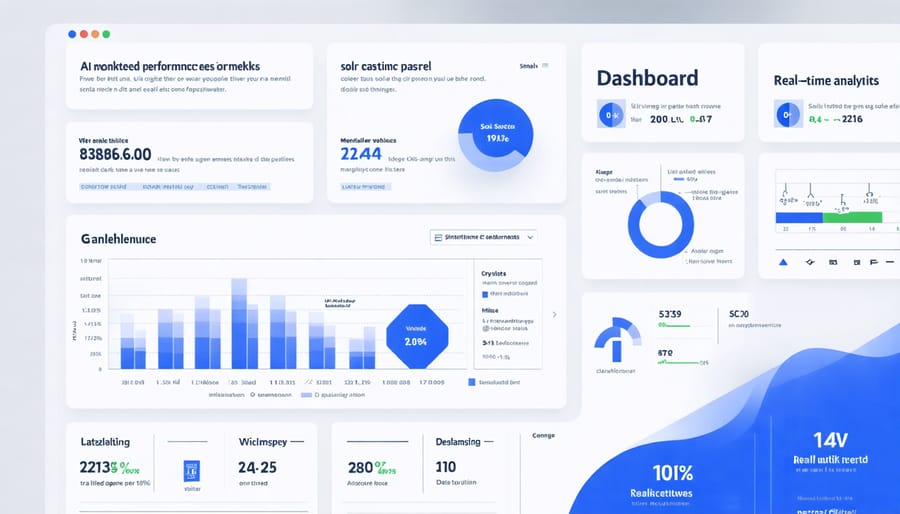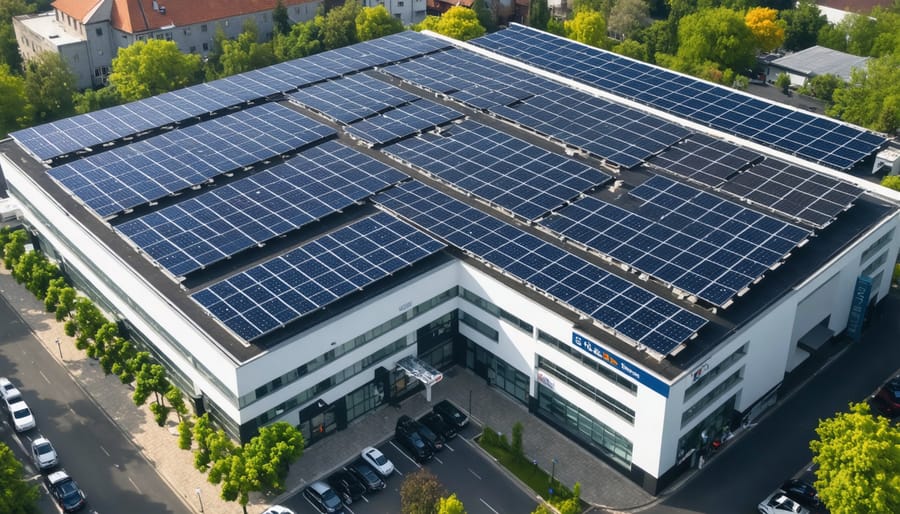Optimization artificial intelligence is revolutionizing how businesses maximize efficiency and drive unprecedented growth across operations. By leveraging advanced machine learning algorithms and real-time data analytics, AI optimization systems can now process millions of variables simultaneously, identifying patterns and opportunities that human analysts might miss. These sophisticated systems are transforming traditional business processes into dynamic, self-improving operations that continuously adapt to changing market conditions and organizational needs.
In today’s competitive landscape, companies implementing optimization AI are seeing dramatic improvements in operational efficiency, with many reporting cost reductions of 15-30% and productivity gains exceeding 25%. From supply chain management to resource allocation, workforce scheduling to energy consumption, AI-powered optimization tools are delivering tangible results across diverse industries and applications.
What sets modern optimization AI apart is its ability to not just analyze historical data but to make predictive recommendations that anticipate future challenges and opportunities. This proactive approach, combined with the technology’s capacity for continuous learning and adaptation, enables organizations to stay ahead of market changes while maintaining peak operational efficiency. For business leaders seeking to enhance their competitive edge, understanding and implementing optimization AI has become not just an advantage, but a necessity for long-term success.
How AI Transforms Solar Energy Management
Real-Time Performance Monitoring
Real-time performance monitoring through AI-driven systems represents a transformative approach to solar energy management. These sophisticated systems continuously analyze vast amounts of operational data, from panel efficiency to environmental conditions, enabling immediate detection of performance irregularities. By leveraging machine learning algorithms, facilities can implement predictive maintenance strategies that identify potential issues before they escalate into costly failures.
Advanced AI monitoring systems track key performance indicators such as energy output, voltage fluctuations, and thermal signatures in real-time. This constant surveillance allows for automatic adjustments to optimize system performance based on changing conditions. The AI algorithms learn from historical data patterns to establish performance benchmarks and can predict future maintenance needs with remarkable accuracy.
For facility managers, this translates into reduced downtime, lower maintenance costs, and maximized energy production. The system’s ability to provide actionable insights through intuitive dashboards enables quick decision-making and proactive maintenance scheduling, ensuring optimal system performance throughout its lifecycle.

Smart Energy Storage Solutions
Artificial Intelligence is revolutionizing how modern energy storage solutions operate, maximizing efficiency and reducing operational costs. Advanced AI algorithms analyze multiple data points, including weather patterns, energy consumption trends, and grid demand, to optimize battery charging and discharging cycles. This intelligent management system ensures batteries charge when electricity costs are lowest and discharge during peak demand periods, maximizing ROI for facility operators.
The AI-driven approach also extends battery lifespan by preventing overcharging and maintaining optimal temperature conditions. Machine learning models predict maintenance needs before issues arise, reducing downtime and replacement costs. For example, a manufacturing facility in Melbourne implemented AI-managed storage systems and reported a 35% reduction in energy costs within the first year.
These smart systems also enable dynamic load balancing, automatically adjusting storage capacity based on real-time demand and solar generation forecasts. This capability ensures consistent power supply while maximizing the use of renewable energy sources, creating a more reliable and sustainable energy infrastructure for businesses.
AI-Driven Cost Optimization

Dynamic Load Balancing
Dynamic load balancing powered by artificial intelligence represents a significant advancement in energy management systems, enabling real-time optimization of power distribution and consumption patterns. AI algorithms analyze vast amounts of data from multiple sources, including weather forecasts, historical usage patterns, and real-time demand metrics, to make intelligent decisions about energy allocation.
These systems continuously monitor and adjust power distribution across different nodes of the network, ensuring optimal energy flow while preventing overload situations. By predicting peak demand periods and potential fluctuations, AI-driven load balancing can proactively redistribute power resources, maintaining system stability and reducing the risk of outages.
For example, in smart building applications, AI systems can automatically adjust energy distribution between different zones based on occupancy patterns, temperature requirements, and time of day. This intelligent management results in significant energy savings while maintaining optimal comfort levels for occupants.
The technology also enables better integration of renewable energy sources into the grid by managing the intermittent nature of solar and wind power. When solar production peaks during midday, AI systems can automatically redirect excess power to energy storage systems or high-demand areas, maximizing the utility of available renewable resources.
Organizations implementing AI-based dynamic load balancing typically report 15-30% improvements in energy efficiency and substantial reductions in peak load demands, leading to lower operational costs and improved grid reliability.
Peak Demand Management
Peak demand management through AI optimization represents a significant advancement in energy cost reduction strategies. By leveraging machine learning algorithms and predictive analytics, organizations can effectively forecast and manage their peak energy consumption periods, resulting in substantial cost savings and improved grid stability.
AI systems analyze historical usage patterns, weather data, and operational schedules to predict peak demand events with remarkable accuracy. These systems can automatically adjust energy consumption across different facility systems, including HVAC, lighting, and industrial equipment, to reduce demand during high-cost periods while maintaining operational efficiency.
For example, a manufacturing facility implementing AI-driven peak demand management reported a 15% reduction in peak demand charges within the first quarter of deployment. The system predicted peak events with 92% accuracy and automatically orchestrated load shifting to off-peak hours without disrupting production schedules.
The technology employs sophisticated load-balancing algorithms that prioritize critical operations while temporarily reducing non-essential power consumption. This intelligent approach ensures business continuity while optimizing energy costs. Advanced AI systems can also integrate with on-site energy storage solutions, enabling organizations to draw from stored power during peak periods instead of relying on expensive grid electricity.
Real-time monitoring and automated response capabilities allow these systems to adapt instantly to changing conditions, providing a level of demand management precision that manual systems cannot achieve.
Implementation Success Stories
Commercial Building Integration
The integration of optimization AI in commercial buildings has revolutionized energy management and operational efficiency. A prime example is the Thames Tower in London, where commercial solar implementation combined with AI optimization resulted in a 35% reduction in energy costs within the first year of deployment.
The AI system continuously monitors and adjusts multiple building parameters, including HVAC systems, lighting, and solar energy production. By analyzing real-time data from thousands of sensors, the AI predicts energy demand patterns and optimizes resource allocation accordingly. The system learns from historical usage patterns, weather forecasts, and occupancy rates to make intelligent decisions about energy distribution.
In practice, this means the building can automatically adjust temperature settings based on occupancy predictions, optimize solar panel angles for maximum energy capture, and manage energy storage systems to minimize grid dependency during peak pricing periods. The AI also identifies maintenance needs before equipment failure occurs, reducing downtime and repair costs.
The implementation has demonstrated remarkable results: a 40% improvement in overall building energy efficiency, reduced carbon emissions by 3,000 metric tons annually, and enhanced tenant comfort levels. The return on investment was achieved within 18 months, making this approach increasingly attractive for commercial property owners seeking sustainable, cost-effective solutions.

Industrial Facility Transformation
A recent case study of a large manufacturing facility in Michigan demonstrates the transformative potential of optimization AI in industrial energy management. The facility, which previously consumed 12.5 million kWh annually, implemented an AI-driven energy optimization system that yielded remarkable results within the first year of operation.
The AI system continuously monitors and analyzes data from over 1,000 sensors throughout the facility, making real-time adjustments to HVAC systems, production line equipment, and lighting controls. By learning from historical usage patterns and environmental conditions, the system optimizes energy consumption while maintaining optimal production conditions.
The implementation resulted in a 27% reduction in overall energy consumption, translating to annual savings of $875,000. The AI system achieved this by identifying peak usage periods, automatically adjusting equipment settings, and providing predictive maintenance alerts to prevent energy-wasteful equipment failures.
Key optimization strategies included:
– Dynamic load balancing across production lines
– Automated scheduling of high-energy processes during off-peak hours
– Smart ventilation control based on real-time air quality measurements
– Predictive maintenance to maintain equipment efficiency
The facility’s successful transformation has become a blueprint for industrial energy optimization, with the initial investment reaching ROI within 14 months. The system continues to improve its performance through machine learning, with efficiency gains increasing by approximately 2% each quarter.
Future-Proofing Your Solar Investment
As the solar energy landscape continues to evolve, integrating AI-driven optimization systems ensures your investment remains competitive and efficient for years to come. Advanced machine learning algorithms are becoming increasingly sophisticated, enabling solar installations to adapt to changing environmental conditions, energy demands, and market dynamics.
Modern AI platforms are designed with scalability in mind, allowing for seamless integration of new features and capabilities through software updates. This adaptability means your initial investment in AI optimization technology can expand to accommodate emerging innovations without requiring complete system overhauls.
Predictive maintenance capabilities are also becoming more refined, with AI systems now able to forecast potential issues months in advance. This extended predictive window allows facility managers to schedule maintenance during optimal periods, reducing downtime and extending equipment lifespan. Furthermore, these systems are increasingly incorporating data from multiple sources, including weather patterns, energy market prices, and grid demand fluctuations, to optimize performance and maximize ROI.
The integration of blockchain technology with AI optimization systems is opening new possibilities for peer-to-peer energy trading and automated grid participation. This combination enables solar installations to automatically respond to grid demands and energy market opportunities, creating additional revenue streams for system owners.
As regulatory frameworks evolve and new sustainability targets are established, AI-optimized solar systems can readily adapt to meet changing compliance requirements. The systems’ ability to generate detailed performance reports and sustainability metrics helps organizations demonstrate their environmental commitment while maintaining operational efficiency. This future-ready approach ensures your solar investment remains valuable and compliant with emerging industry standards.
Optimization AI represents a transformative force in modern business operations, delivering substantial improvements in efficiency, cost reduction, and resource utilization. By implementing AI-driven optimization solutions, organizations can expect to see 15-30% increases in operational efficiency, significant reductions in waste, and enhanced decision-making capabilities across their processes. The technology’s ability to analyze complex data patterns and make real-time adjustments provides a competitive advantage that cannot be ignored in today’s fast-paced business environment.
To stay competitive, businesses should begin their AI optimization journey by identifying key processes that would benefit most from automation and intelligent decision-making. Start with a pilot program in one department, measure the results, and scale successful implementations across the organization. The time to act is now – companies that delay implementation risk falling behind competitors who are already harnessing the power of optimization AI to drive their business forward.

